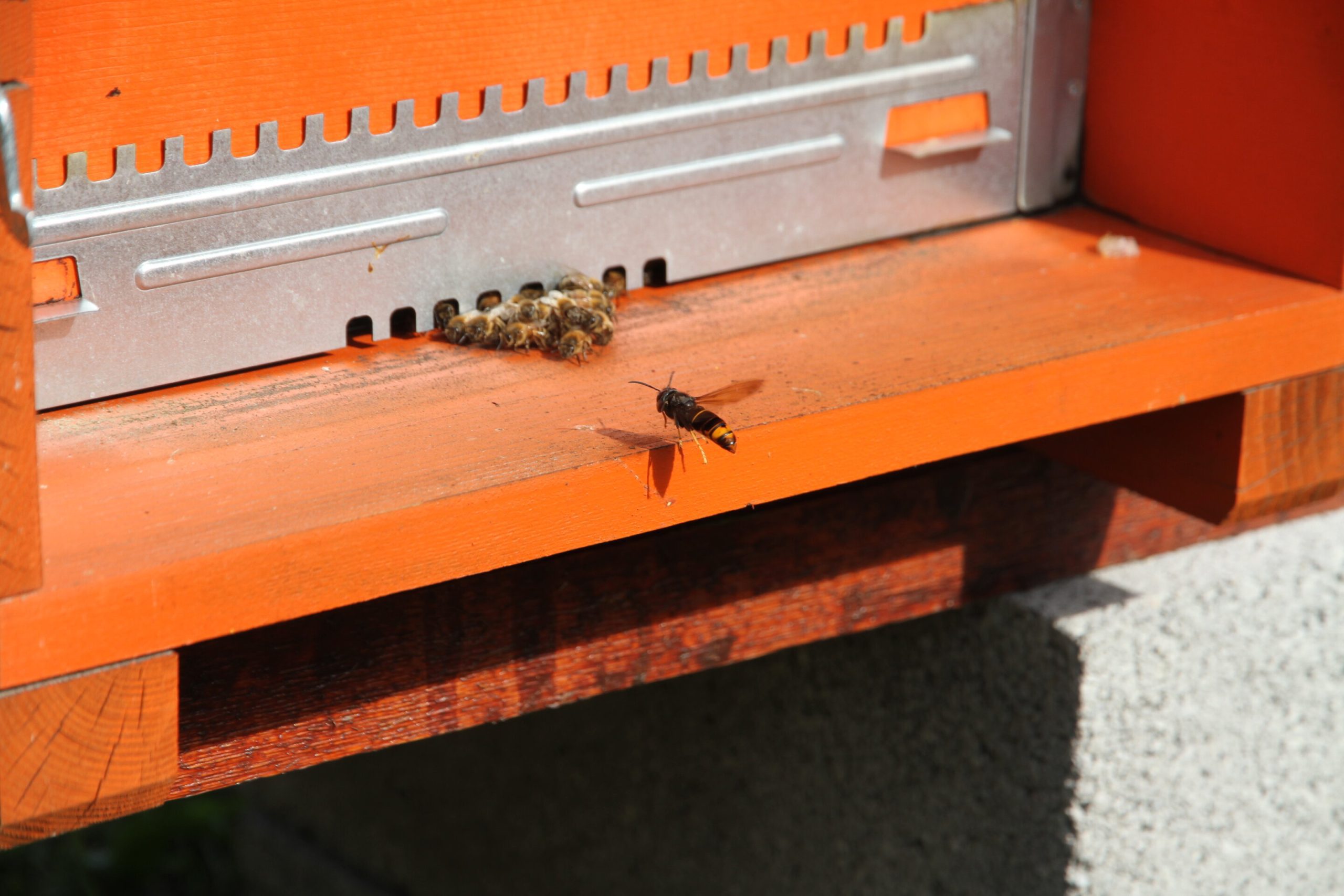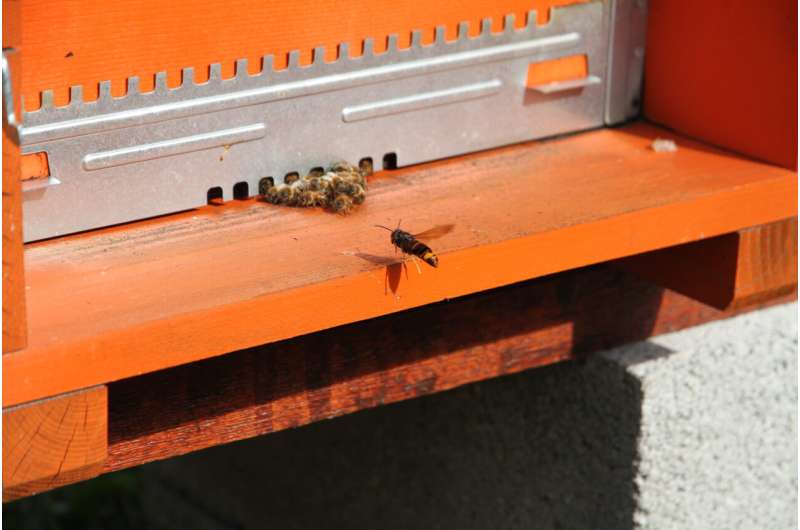

Wasps and hornets have a remarkable capacity of surviving transportation and establishing invasive populations in new areas. In some cases, this can generate massive environmental and socio-economic impacts. Such is the case of the Asian yellow-legged hornet (Vespa velutina), which has been spreading throughout Europe and worldwide, threatening to seriously impact beekeeping.
However, research shows that such invasions do not go unnoticed. A team of researchers working on the Asian yellow-legged hornet in Italy (Dr. Jacopo Cerri from the University of Primorska, Slovenia, and Dr. Simone Lioy, Prof. Marco Porporato and Prof. Sandro Bertolino, from Turin University, Italy) discovered that citizen awareness about invasive hornets is increasing.
Moreover, they found that the relevant stakeholders—such as beekeepers—are aware of the hornet’s impacts. They consider the Asian yellow-legged hornet as one of the major causes of honey bee decline in Italy, comparing its effects to those of pesticides, and believing it causes more damage than diseases or other native insects.
To evaluate public awareness of this invasive hornet, the researchers adopted an innovative methodology, which they describe in a paper in the open-access journal NeoBiota. In addition to surveying beekeepers, the authors also analyzed Internet searches, focusing on Google queries and visits to relevant Wikipedia pages.
The team found that beekeepers stayed up to date with information on the Asian yellow-legged hornet thanks to a wide range of different channels, such as the Internet, specialized magazines, and activities with other members of their community. Interestingly, they found that conventional media and mailing lists seemed to be of little contribution to knowledge on this species.
With high reproductive potential and no specialized predators, the Asian yellow-legged hornet predates intensively upon the western honey bee, which could decrease pollination, undermine honey production and inflict consequences for the overwinter survival of colonies. It also limits the foraging activity of honey bees by determining a “foraging paralysis,” a state in which honey bees do not leave the colony, fearing its predation. On top of that, as the species builds its nests mainly in or near urban areas, it poses a risk of stings to people, which in some cases could lead to fatalities.
An increased consciousness in citizens and stakeholders will hopefully lead to a higher number of “aware eyes” able to spot invasive hornets in different environments, the researchers explain. Timely reporting of their presence would allow the speedy activation of more appropriate management measures, containing any possible damages before it’s too late.
Honey bee sting: Key aspect of bee defense against hornets
Jacopo Cerri et al, Combining surveys and on-line searching volumes to analyze public awareness about invasive alien species: a case study with the invasive Asian yellow-legged hornet (Vespa velutina) in Italy, NeoBiota (2022). DOI: 10.3897/neobiota.73.80359
Pensoft Publishers
Citation:
More and more people are becoming aware of the dangers posed by invasive hornets (2022, June 1)
retrieved 1 June 2022
from https://phys.org/news/2022-06-people-aware-dangers-posed-invasive.html
This document is subject to copyright. Apart from any fair dealing for the purpose of private study or research, no
part may be reproduced without the written permission. The content is provided for information purposes only.